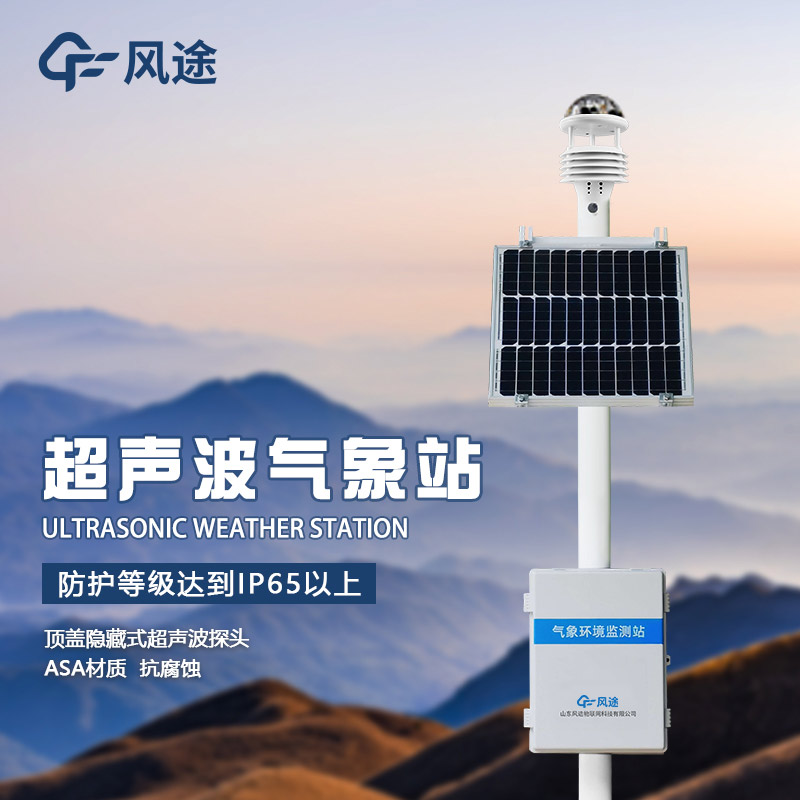Tianyi Sensor IOT Technology Co., Ltd
Sales Manager:Ms. Emily Wang
Cel,Whatsapp,Wechat:+86 15898932201
Email:info@fengtutec.com
Add:No. 155 Optoelectronic Industry Accelerator, Gaoxin District, Weifang, Shandong, China

Sales Manager:Ms. Emily Wang
Cel,Whatsapp,Wechat:+86 15898932201
Email:info@fengtutec.com
Add:No. 155 Optoelectronic Industry Accelerator, Gaoxin District, Weifang, Shandong, China
time:2025-04-28 10:04:38 source:Weather Station viewed:189 time
Traditional weather stations mostly use mechanical devices such as wind speed and direction indicators to measure meteorological elements. These devices have some limitations. For example, mechanical components are prone to wear and icing, requiring regular maintenance and calibration. Moreover, their measurement accuracy may be affected in harsh environments. However, ultrasonic technology has brought many conveniences to small weather stations:
Firstly, it has high measurement accuracy. Ultrasonic sensors measure meteorological parameters such as wind speed and direction accurately by emitting ultrasonic pulses and receiving the echo signals, using the time difference. Its measurement accuracy is higher than that of traditional mechanical sensors, and it can reflect the actual meteorological conditions more accurately.
Secondly, there is no mechanical wear and it has a long lifespan. The Ultrasonic weather station has no mechanical components like rotating cups and wind vanes, so there will be no mechanical wear. This greatly reduces the failure rate of the equipment, extends its service life, and reduces the maintenance cost.
Thirdly, it has a high integration degree and a small size. Ultrasonic sensors can be highly integrated with other meteorological sensors (such as temperature, humidity, and air pressure sensors, etc.), making the overall structure of the weather station more compact and small, which is convenient for carrying and installation.
There are mainly three types of small ultrasonic weather stations: handheld, portable, and fixed.
The handheld Ultrasonic weather station is small in size and light in weight, making it easy to carry. It generally uses an engineering plastic ABS shell, which is sturdy and durable. It has no moving parts and does not require maintenance or on-site calibration. It comes with a built-in display screen that can display the detected data in real time. It also has a built-in Bluetooth module, which can transmit the data to a mobile phone or computer through a dedicated APP. It is suitable for on-site inspections in the field, handheld multi-meteorological element detection, mobile patrol inspections, power safety inspections, ship wharf and navigation detection, urban environmental monitoring, and other scenarios, providing convenient meteorological monitoring services for outdoor adventures, environmental assessments, disaster warnings, etc.
The portable Ultrasonic weather station has the characteristics of high integration, high reliability, low power consumption, small size, quick installation, and telescopic ability. It supports various communication methods, requires no debugging, can be folded and telescoped, and comes with a rechargeable power source. It is mainly suitable for field monitoring. For example, in agriculture, it is used to monitor the microclimate of farmland, providing a scientific basis for agricultural production; in the environmental protection field, it is used for air quality monitoring; and in scientific research, it provides meteorological data for researchers.
The fixed Ultrasonic weather station is composed of an integrated ultrasonic sensor, a support frame, a solar panel and lithium battery power supply system, a data transmission module, etc. After installation, it can operate stably for a long time, automatically collect and upload meteorological data, and also has an automatic alarm function. It is widely used in many fields such as meteorological observation stations, airports, ports, agricultural production, and environmental protection monitoring, providing important data support for meteorological research, meteorological forecasting, and disaster warnings.

When camping in the wild, the weather conditions are crucial to the camping experience. The Handheld Weather meter can really show its prowess at this time, helping us to understand weather changes in advance and make preparations accordingly.After we arrive at the camping site, we first take...
Life detection device is an emergency rescue equipment that detects and locates buried survivors using audio and video probes. This device can capture sounds such as shouts and groans emitted by trapped individuals and is used in search and rescue operations at disaster sites such as earthquakes and landslides....
A hydropower station, a comprehensive engineering facility that converts hydropower energy into electrical energy, operates on the fundamental principle of utilizing water level drop (water level difference). As water flows from a higher to a lower elevation, its stored energy drives a turbine to ro...
High-standard farmland refers to high-yield and stable-yield farmland constructed through land consolidation, soil improvement, irrigation system development, and other measures. The key lies in "precision management" and "efficient output." Compared to ordinary farmland, high-st...